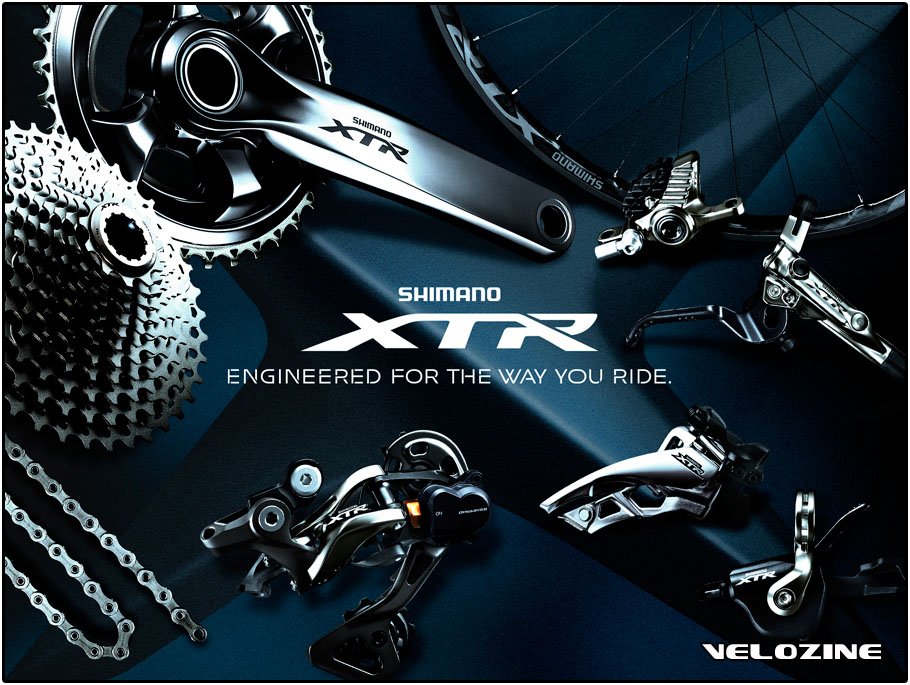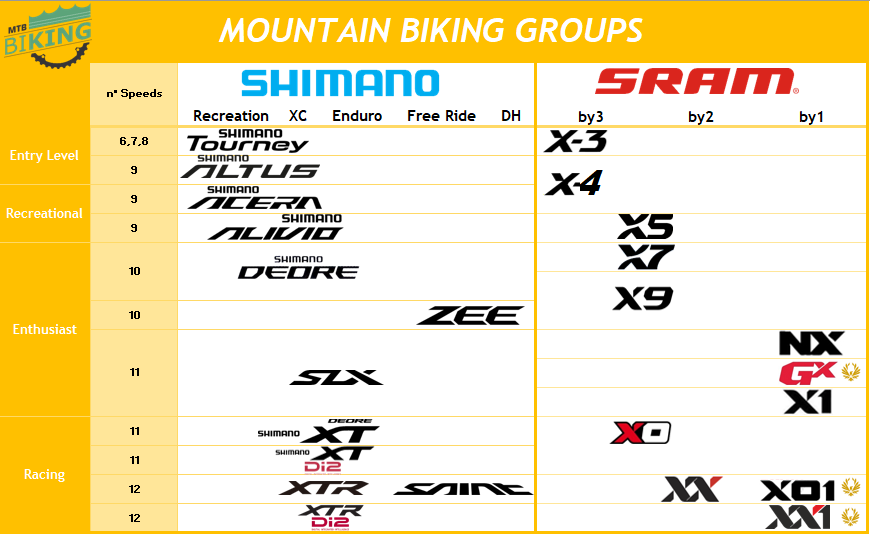

Hydraulic borrows its technology from the automotive world and uses a fluid system to transfer force from the brake lever to the brake pads. Where over a decade ago rim brakes were still popular, disc brakes now are featured on just about any mountain bike selling for over AU$500.ĭisc brakes can be easily segmented into two categories: Hydraulic and mechanical. This is due to disc brakes becoming the standard choice in mountain bikes. In many cases, you’ll still be able to match your brakes to your desired groupset, but it’s far more common to mix-and-match in this regard.

Shimano gearing hierarchy free#
Traditionally part of a groupset, mountain bike brakes have broken free into their own category in recent years. These usually work by having a cable pull them in one direction, and then relying on spring tension within the derailleur to pull opposite direction. Derailleursĭerailleurs are the components that guide the chain between the cogs. A chain is usually made of steel and features a serious of interconnected links that are smooth to rotate, but difficult to twist. Without the chain, the bike has no drive. The chain is what connects the front crankset to the rear cassette. These rear cogs dictate how many gears a bike has at the back, with most modern mountain bikes typically offering between eight to twelve gears here. The cassette is the rear cogs that connect to the rear wheel. The two key types include ones that thread into place (threaded) and ones that are pressed into place and rely on tight tolerances, these are known as ‘press-fit’ bottom brackets. The bottom bracket attaches within the frame and so there is a large array of options to suit various frame designs. The crankset spins on a set of bearings, these are known as the bottom bracket.

Downhill bikes and similar will use shorter 165mm cranks for improved ground clearance. With this, smaller bikes will often use 170mm crank arms, with medium-sized bikes and up using a 175mm crank length. Crank length in mountain biking is typically more standard to help with leverage at an average lower riding speed ( read more about crank length in our road bike groupsets guide). The length of crank arms does vary, but not as much as seen with road bikes. Modern mountain bikes have one, two or three, with the latest trend being the fewer the better. The crankset and its number of chainrings dictate how many front gears a bike has. On modern mountain bikes, the crankset consists of the crank arms, chainrings (the front cogs) and the axle that connects the two crank arms together. The crankset is what the bicycle pedals attach to and are what your legs spin in circles as you pedal. In this article you’ll learn what you need to know when it comes to groupsets: including what each part does, the key difference between various price points and other information you’ll need to make an educated decision on which groupset is best for you. It's a closed circuit that propels the bike.Īs you spend more money, the efficiency, durability and shifting performance increases while the weight decreases. The drivetrain consists of the cranks, chainrings (front cogs), chain, cassette (rear cogs), derailleurs and shifters. Thought of as the bike’s engine room, a groupset comprises of brakes and the drivetrain. What’s a modern day mountain bike without a groupset? Well, it’s a frame, suspension fork, wheels and control items, but it’s not a bike.


 0 kommentar(er)
0 kommentar(er)
